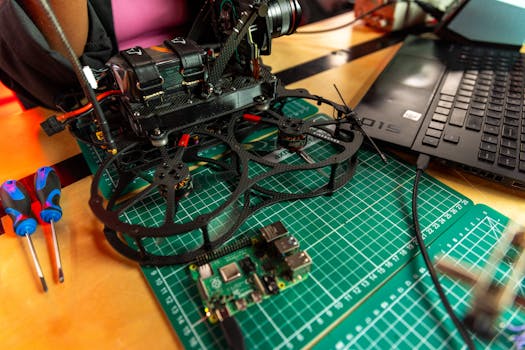
The Raspberry Pi, a favorite among hobbyists and developers, is facing a price increase on some models. This unexpected change is being linked to the surging demand for AI-related technology, impacting component availability and costs.
Raspberry Pi Price Hike: Blame the AI Boom?
The Raspberry Pi has long been celebrated as an affordable and versatile single-board computer, empowering makers, educators, and tech enthusiasts worldwide. However, recent news has sent ripples through the community: a price hike on select models. While seemingly unrelated, the surging demand for Artificial Intelligence (AI) technology is playing a significant role in this shift.
The Unexpected Price Increase
For years, the Raspberry Pi Foundation has strived to maintain stable and accessible pricing, making their products a cornerstone of accessible computing. The recent price adjustments, however, affect specific models, particularly those with higher RAM configurations. While the entry-level models remain relatively unchanged, users seeking more powerful options are now facing increased costs.
Which Models Are Affected?
The price increases primarily target the Raspberry Pi 4 models with 4GB and 8GB of RAM. While the exact amount varies depending on the retailer and region, users can expect to see a noticeable difference compared to previous prices. It's crucial to check with your preferred supplier for the most up-to-date information.
Why Now?
The question on everyone's mind is, "Why is this happening now?" The answer lies in the global semiconductor market and the unprecedented demand fueled by the AI boom.
The AI Boom's Impact on Component Availability
Artificial intelligence, machine learning, and related technologies are rapidly evolving, driving an insatiable demand for processing power. This, in turn, has led to a surge in demand for specific components, including memory chips (RAM) and other critical semiconductors. These components are essential not only for high-performance AI accelerators and data centers, but also for devices like the Raspberry Pi.
Increased Demand, Limited Supply
The increased demand from the AI sector puts immense pressure on the global supply chain. Semiconductor manufacturers are prioritizing production for high-margin AI-related products, leading to shortages and increased prices for other components used in devices like the Raspberry Pi. This creates a domino effect, ultimately impacting the cost of manufacturing and distributing these single-board computers.
The Ripple Effect on Smaller Manufacturers
While large corporations can often absorb some of the increased costs or secure preferential supply agreements, smaller manufacturers like the Raspberry Pi Foundation are more vulnerable to these market fluctuations. They are forced to pass on some of the increased costs to consumers to maintain their operations and ensure continued production.
What Does This Mean for Raspberry Pi Users?
The price hike has several implications for Raspberry Pi users, ranging from hobbyists to professional developers.
Budget Considerations
For hobbyists and students working on personal projects, the increased cost may require careful budget planning. Consider exploring alternative models with lower RAM configurations or searching for deals and discounts from various retailers.
Project Scalability
Developers planning to use Raspberry Pi devices for larger-scale projects may need to re-evaluate their hardware budget and explore alternative solutions or optimize their code to minimize RAM usage. Cloud-based solutions could be another option.
Innovation and Accessibility
Ultimately, the price increase raises concerns about the accessibility of Raspberry Pi devices, particularly for educational institutions and individuals in developing countries. The Raspberry Pi Foundation is actively working to mitigate these challenges and explore alternative solutions to maintain affordable computing for all.
Practical Tips and Alternatives
While the price increase is a setback, there are still ways to make the most of your Raspberry Pi experience.
Optimize Your Code
Efficient coding can significantly reduce RAM usage. Optimize your scripts and applications to minimize memory footprint, allowing you to work with lower RAM configurations.
Explore Alternative Models
Consider using older Raspberry Pi models or exploring alternative single-board computers that may offer better value for your specific needs. However, be aware that performance may vary.
Wait and See
The semiconductor market is constantly evolving. It's possible that prices will stabilize or even decrease in the future. Monitor market trends and consider waiting for a more favorable time to purchase if possible.
Consider Used Options
Explore the used market for Raspberry Pi boards. Often, you can find perfectly functional boards at a discounted price.
Conclusion
The Raspberry Pi price hike, while unwelcome, is a direct consequence of the global semiconductor shortage and the surging demand for AI-related technology. While users may need to adjust their budgets and explore alternative solutions, the Raspberry Pi remains a powerful and versatile platform for innovation and learning. The Raspberry Pi Foundation is committed to navigating these challenges and ensuring the continued accessibility of their products for the global community. It's a bump in the road, but the Raspberry Pi's journey is far from over.
